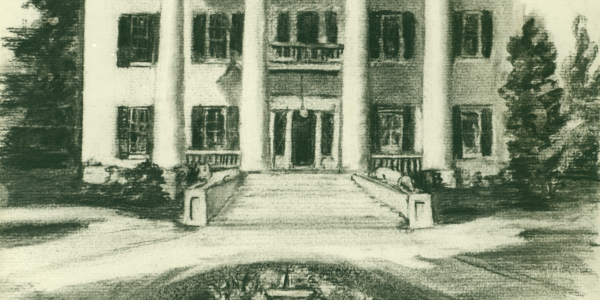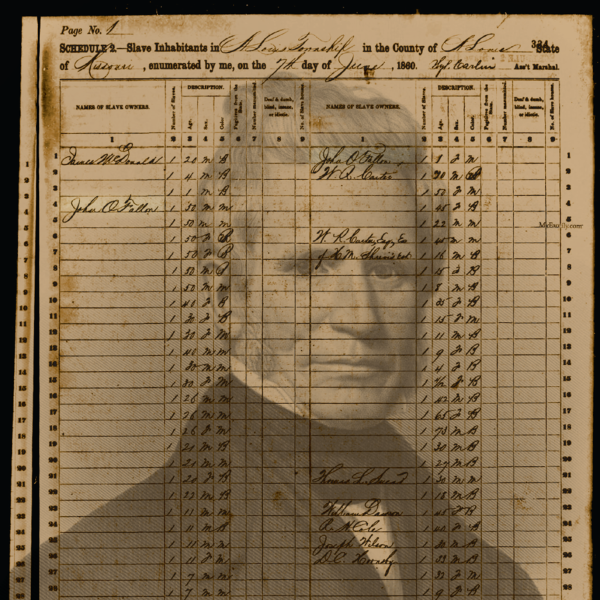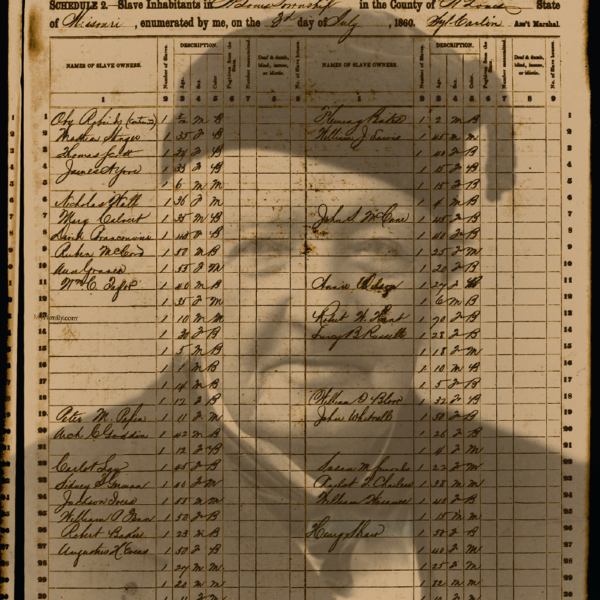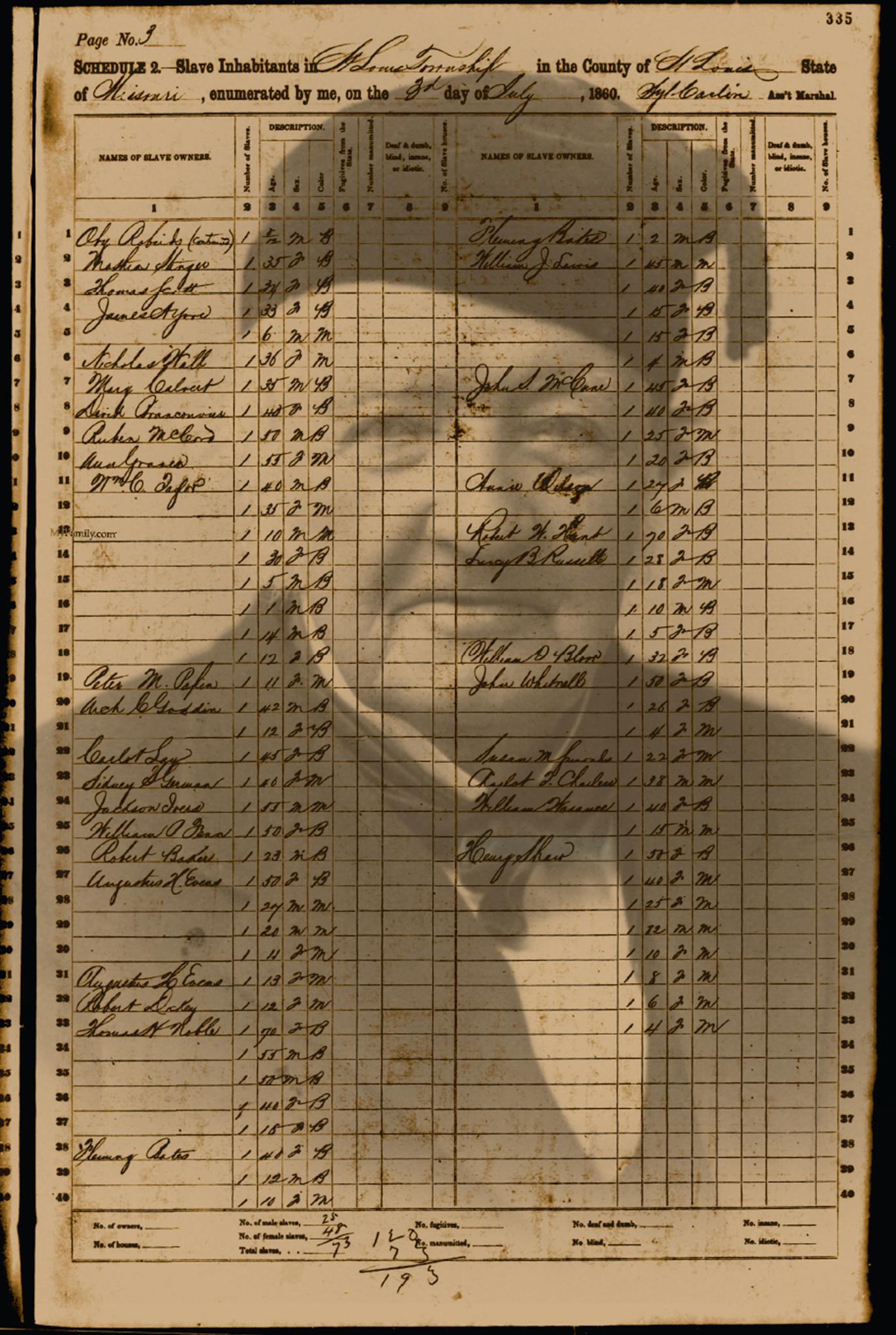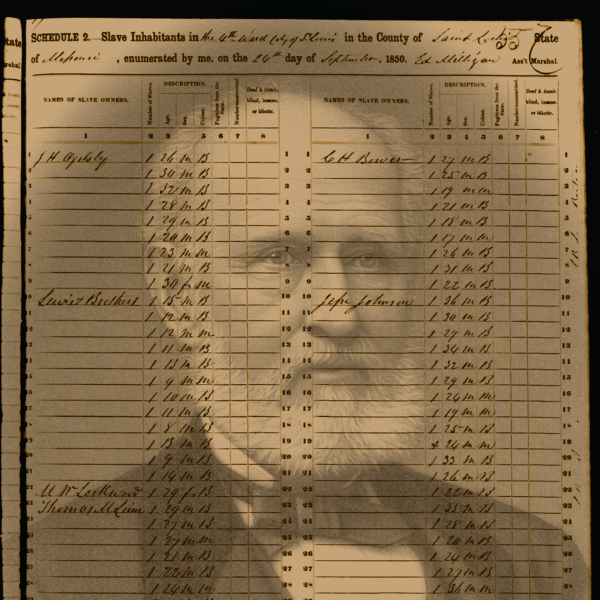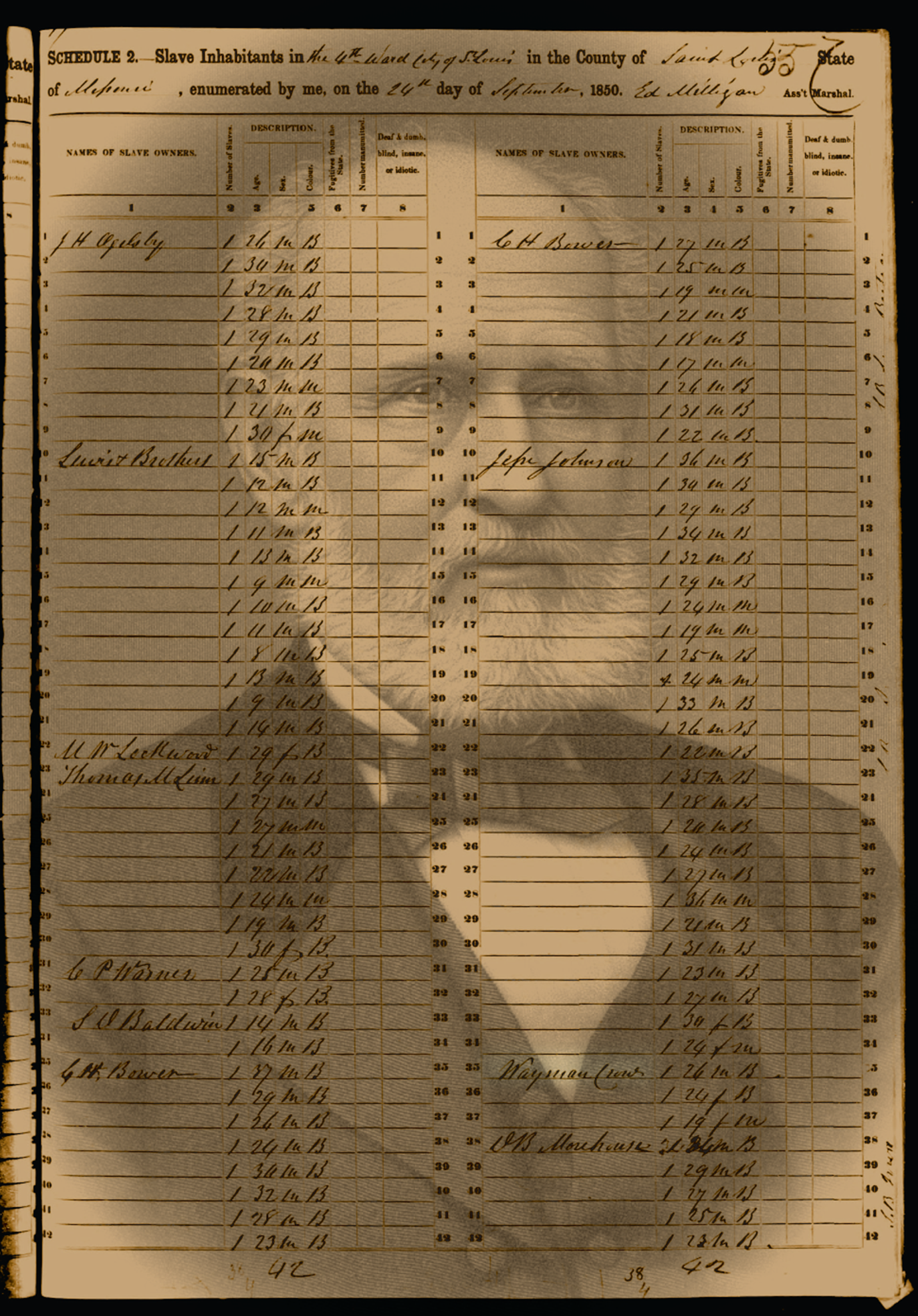WashU & Slavery Crime Scenes
The installation revisits this origin story by remembering O'Fallon mansion (above) as a site of racist violence and recontextualizing archived portraits of several foundational figures. Key here is a series of "mug shots" created by blending portraits of these figures with US census slave schedules enumerating their ownership of enslaved people. The (re)presentations build counter-narratives by subverting the visual aesthetics of fine art portraiture with the lines, notations, and other elements of their enslaver census records to visually invoke the cultural and psychological force of the “mug shot,” a punitive style of photographic portraiture that elites are rarely subjected to.
Critical criminologists note that the field of criminology grew in tandem with photographic portraiture, such that fingerprinting and photographic identification became proxies for ‘proof’ of wrongdoing, making “the mug shot...no mere instrument of identification then, but a social force with the capacity to affix stigma, shame and criminality on the body of the accused and the broader identity that the individual is thought to represent” (Linneman and Wall, 321-328). These enslaver mug shots counter historical erasure of these figure’s crimes against humanity and challenge us to face a shameful institutional relationship to slavery, and its implications today.

